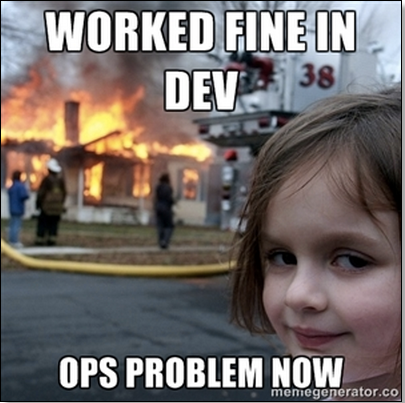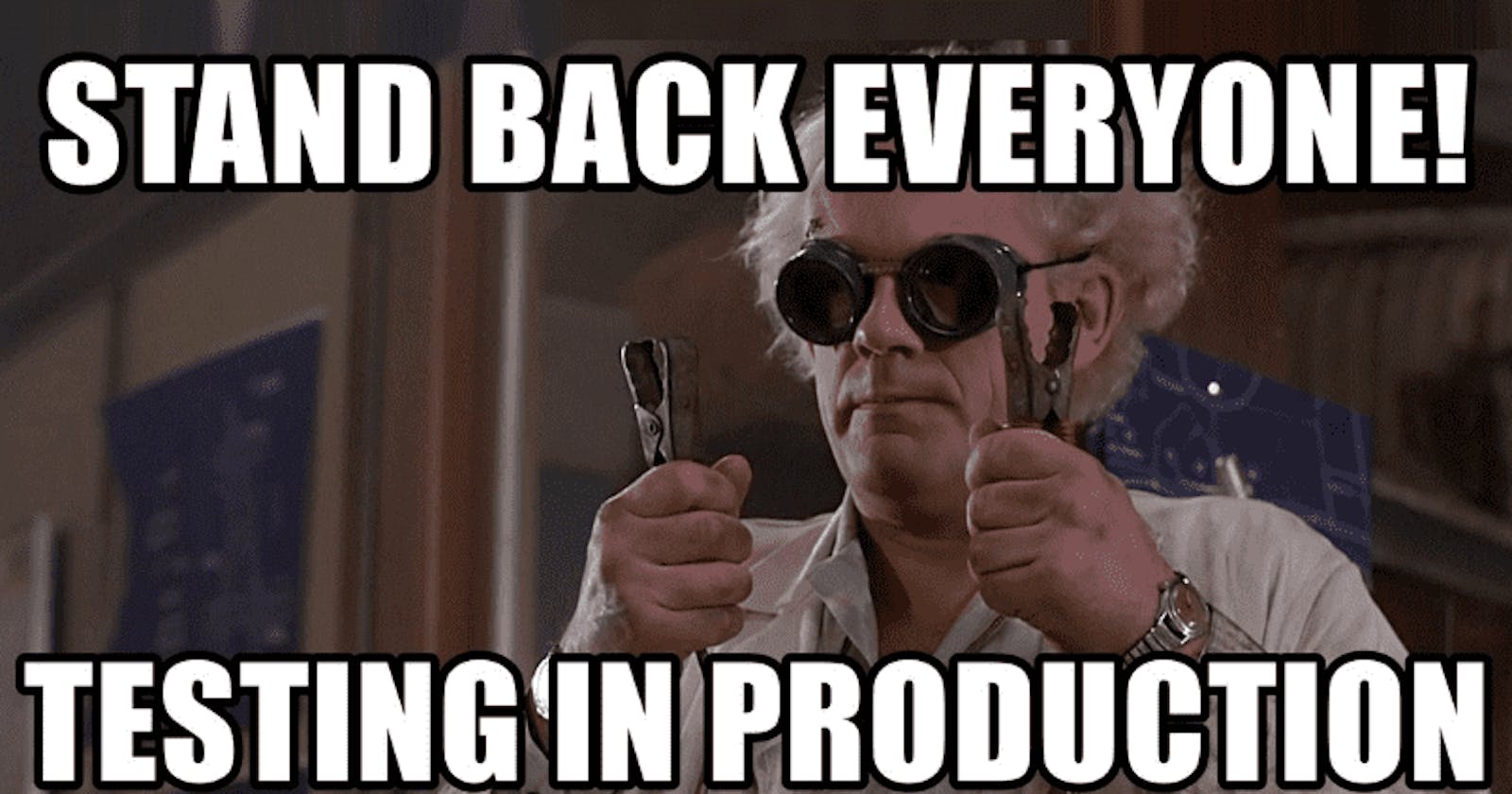"What does it take to keep your customers Happy in Software driven world?" - An SRE engineer Perspective
Table of contents
No headings in the article.
Site reliability engineering (SRE) is important for keeping customers happy in a software-driven world because it focuses on the availability, performance, and reliability of production systems. By implementing SRE practices and leveraging the right tools and technologies, organizations can improve the reliability and performance of their systems, and better meet the needs of their users and business.
In a software-driven world, customers have come to expect high levels of availability and performance from the systems and services they use. If a system is unreliable, slow, or unavailable, customers can become frustrated and may look for alternatives. By implementing SRE practices, organizations can improve the reliability and performance of their systems, and can provide a better experience for their customers.
SRE practices can also help organizations to prevent and quickly resolve incidents and outages, minimizing downtime and ensuring that systems are available and performant. This can help to keep customers happy by ensuring that they have access to the systems and services they need when they need them.

Overall, SRE is important for keeping customers happy in a software-driven world because it focuses on the reliability and performance of production systems, and helps organizations to provide a better experience for their customers. By implementing SRE practices, organizations can improve the reliability and performance of their systems, and can better meet the needs of their users and business.
Today we will review different segments of SRE beginning with What the heck is SRE?
What is SRE and how does it differ from traditional IT operations:
- The key principles and practices of SRE.
The Role of the SRE
Responsibilities and tasks of an SRE
The skills and knowledge required to be an effective SRE.
Monitoring and Observability
The importance of monitoring and observability in SRE
Common monitoring tools and techniques used by SREs
Incident Management and Response
The role of SREs in incident response and management
How SREs use incident response processes and tools to minimize downtime and improve reliability.
Grafana and Splunk in SRE
An overview of Grafana and Splunk
How SREs use Grafana and Splunk to monitor, analyze, and troubleshoot issues in production systems.
Other Tools and Technologies Used by SREs
Other common tools and technologies used by SREs, such as configuration management systems and log analysis tools
How these tools support the work of SREs in monitoring, incident response, and improving system reliability.
Conclusion:
- A summary of the key points covered in the article and the importance of SRE in modern software and systems engineering.
Section 1: Introduction to Site Reliability Engineering
Site reliability engineering (SRE) is a discipline that focuses on the availability, performance, and reliability of production systems. SREs work to ensure that systems are reliable, scalable, and performance and that they meet the needs of the users and business.
One key difference between SRE and traditional IT operations is the focus on reliability. SRE teams are responsible for defining and measuring reliability metrics, and for implementing strategies and practices to improve those metrics over time. For example, an SRE team might set a target uptime of 99.99% for a production system, and then work to identify and address potential issues that could cause downtime.
Another important aspect of SRE is the use of automation to improve efficiency and reduce the need for manual intervention. SREs use tools and processes to automate repetitive tasks, such as deploying code updates or scaling infrastructure, freeing up time for more complex and value-added work.
Examples of SRE practices include monitoring and observability, incident response and management, and capacity planning and resource management. By implementing these practices and focusing on reliability, SREs help to ensure that production systems are stable, performant, and able to meet the needs of the business and users.
Continuing on from the previous section, here is an overview of the key principles and practices of SRE:
The primary goal of SRE is to improve the reliability of production systems. This includes defining and measuring reliability metrics, such as uptime and error rates, and implementing strategies and practices to improve those metrics over time.
SRE teams use a variety of tools and techniques to monitor and observe production systems, including log analysis, performance metrics, and alerts. This enables SREs to identify and troubleshoot issues before they impact users, and to identify patterns and trends that can help to improve reliability.
SREs use incident response processes and tools to manage and resolve issues in production systems. This includes defining and documenting incident response procedures, coordinating incident response teams, and using tools such as post-mortem analysis to identify root causes and prevent future incidents.
SREs use automation to improve efficiency and reduce the need for manual intervention. This includes using tools and processes to automate routine tasks, such as deployments and infrastructure management, as well as using machine learning and other advanced technologies to automate more complex tasks.
SRE teams work closely with development teams to integrate reliability practices into the software development process. This includes defining and enforcing reliability standards, providing guidance and support to development teams, and collaborating on the design and implementation decisions that impact reliability.
Section 2: The Role of the SRE
As a discipline, SRE is focused on the reliability and performance of production systems. Within an organization, SRE teams are responsible for implementing and maintaining the practices and processes that support this goal.
The specific responsibilities and tasks of an SRE will vary depending on the organization and the systems they work on, but some common responsibilities and tasks include:
Defining and enforcing reliability standards, metrics, and practices
Monitoring and observing production systems to identify and troubleshoot issues
Coordinating incident response and managing incidents in production systems
Automating routine tasks and processes to improve efficiency and reduce manual intervention
Collaborating with development teams to integrate reliability practices into the software development process
Conducting performance analysis and capacity planning to ensure that production systems are scalable and able to meet demand
Evaluating and implementing new technologies and tools to improve reliability and performance
To be effective in these tasks, SREs need a range of skills and knowledge. This may include expertise in server-side programming languages and frameworks, database and storage systems, networking and distributed systems, and monitoring and observability tools. SREs also need strong problem-solving skills, as well as the ability to work collaboratively with other teams and departments.
Overall, the role of the SRE is to ensure that production systems are reliable, scalable, and performant and that they meet the needs of the business and users. This involves a combination of technical expertise, problem-solving skills, and collaboration with other teams and departments.
Section 3: Monitoring and Observability
Monitoring and observability are critical components of SRE, as they enable SREs to identify and troubleshoot issues in production systems before they impact users. Monitoring involves the use of tools and techniques to collect data and metrics from production systems, while observability involves the ability to interpret and understand that data to identify and diagnose issues.

Some common tools and techniques used by SREs for monitoring and observability include:
Log analysis: SREs use tools like Elasticsearch, Splunk, and Grafana to collect, search, and visualize log data from production systems. This enables SREs to quickly identify and troubleshoot issues, as well as to identify patterns and trends that can help to improve reliability.
Performance metrics: SREs use tools like Prometheus and Datadog to collect and monitor performance metrics from production systems. This can include metrics like CPU and memory utilization, network traffic, and error rates, and can help SREs to identify performance bottlenecks and other issues.
Alerts and notifications: SREs use tools like PagerDuty and VictorOps to set up alerts and notifications for critical issues in production systems. This enables SREs to quickly respond to issues and minimize downtime, as well as to track and monitor the status of issues over time.
Tracing and debugging: SREs use tools like Zipkin and Jaeger to trace requests as they flow through production systems, and to identify and debug issues that impact performance or reliability. This can help SREs to quickly identify and fix problems, and to improve the overall performance and reliability of production systems.
Overall, monitoring and observability are critical skills for SREs, enabling them to identify and troubleshoot issues in production systems and to improve the reliability and performance of those systems.
Section 4: Incident Management and Response
Incident management and response is a key responsibility of SRE teams, as SREs are responsible for ensuring that production systems are reliable and available. When an incident occurs, SREs use a combination of processes and tools to manage and resolve the issue, minimize downtime and restore service as quickly as possible.
Some common incident management and response practices used by SREs include:
Defining and documenting incident response procedures: SREs work with other teams and departments to define and document incident response procedures, including roles and responsibilities, communication channels, and escalation procedures. This ensures that everyone knows what to do in the event of an incident, and helps to reduce confusion and coordination issues.
Coordinating incident response teams: SREs often lead incident response teams, coordinating the efforts of multiple teams and departments to resolve an incident. This can include coordinating communication, gathering and analyzing information, and coordinating the deployment of fixes and other remediation efforts.
Using post-mortem analysis to identify root causes: After an incident has been resolved, SREs use post-mortem analysis to identify the root causes of the incident, and to implement measures to prevent similar incidents from occurring in the future. This can include updating procedures, implementing new monitoring or alerting systems, or making changes to the system itself.
Implementing a blameless culture: SREs strive to create a blameless culture, where incidents are seen as opportunities to learn and improve, rather than as failures that need to be blamed on individuals or teams. This can help to foster a culture of collaboration and continuous improvement, and can reduce the fear and anxiety that can often accompany incidents.
Overall, incident management and response is a critical part of the work of SREs, and is essential for ensuring the reliability and availability of production systems. By implementing effective incident response processes and tools, SREs can minimize downtime and improve the overall reliability and performance of systems.
Section 5: Grafana and Splunk in SRE
Grafana and Splunk are two popular tools that are often used by SREs in their work. Grafana is an open-source tool for visualizing and analyzing time-series data, while Splunk is a commercial tool for collecting, analyzing, and visualizing log data.

Some common ways that SREs use Grafana and Splunk in their work include:
Monitoring and observability: Both Grafana and Splunk provide powerful tools for collecting and visualizing data from production systems. SREs use these tools to monitor the performance and reliability of systems and to identify and troubleshoot issues before they impact users.
Alerting and notifications: Both Grafana and Splunk provide ways to set up alerts and notifications for critical issues in production systems. This enables SREs to quickly respond to issues and minimize downtime, and track the status of issues over time.
Troubleshooting and debugging: Both Grafana and Splunk provide tools and features that can help SREs to troubleshoot and debug issues in production systems. For example, Grafana provides the ability to create and use custom dashboards and alerts, while Splunk offers search and analysis capabilities that can help SREs quickly identify and fix problems.
Capacity planning and resource management: Both Grafana and Splunk provide tools and features that can help SREs to perform capacity planning and resource management. For example, Grafana provides the ability to visualize and monitor resource utilization over time, while Splunk provides features for tracking and analyzing resource utilization and costs.
Overall, Grafana and Splunk are valuable tools for SREs, providing powerful capabilities for monitoring, alerting, troubleshooting, and resource management. By using these tools, SREs can improve the reliability and performance of production systems and better meet the needs of the business and users.
Section 6: Other Tools and Technologies Used by SREs
In addition to tools like Grafana and Splunk, SREs use a variety of other tools and technologies to support their work. These tools and technologies can help SREs to automate routine tasks, to manage and deploy infrastructure, and improve the overall reliability and performance of production systems.
Some common tools and technologies used by SREs include:
Containerization and orchestration: SREs often use tools like Docker and Kubernetes to containerize applications and to manage and orchestrate containers in production environments. This can help SREs to improve the scalability and reliability of systems, and to enable more efficient deployment and management of applications and services.
Serverless architectures: SREs may use serverless architectures, such as AWS Lambda, to build and deploy applications and services. Serverless architectures can help SREs to reduce the need for infrastructure management and to improve the scalability and reliability of systems.
Cloud services and platforms: SREs often use cloud services and platforms, such as AWS, Azure, and Google Cloud, to deploy and manage production systems. These platforms provide a range of tools and services that can help SREs to improve the reliability and performance of systems, and to manage and monitor production environments at scale.
Overall, SREs use a variety of tools and technologies to support their work in ensuring the reliability and performance of production systems. By leveraging these tools and technologies, SREs can improve the efficiency and effectiveness of their work, and can better meet the needs of the business and users.
Section 7: Conclusion
Site reliability engineering (SRE) is a discipline that focuses on the reliability, performance, and availability of production systems. SRE teams are responsible for implementing and maintaining the practices and processes that ensure that systems meet the needs of the business and users.
Some key principles and practices of SRE include monitoring and observability, incident response and management, and automation. SREs use a variety of tools and technologies to support their work, including Grafana, Splunk, and other tools for monitoring and observability, and configuration management systems, containerization, and cloud services for deployment and management.
Overall, SRE is a critical discipline in modern software and systems engineering, helping to ensure that production systems are reliable, scalable, and performant. By implementing SRE practices and leveraging the right tools and technologies, organizations can improve the reliability and performance of their systems, and better meet the needs of their users and business.
